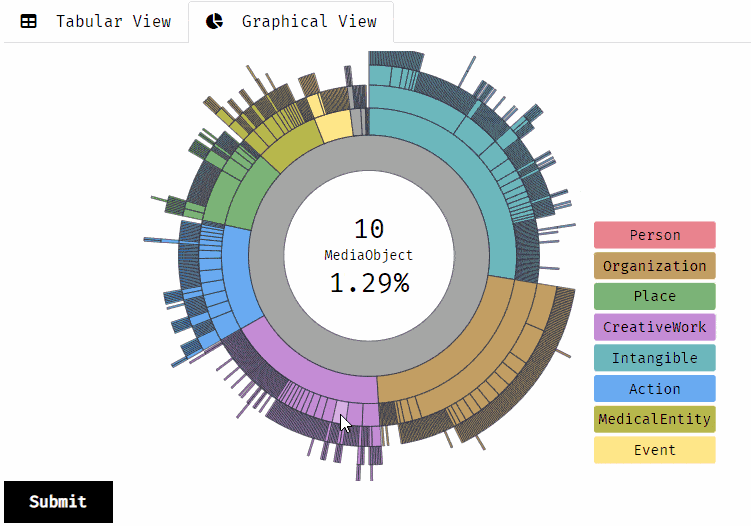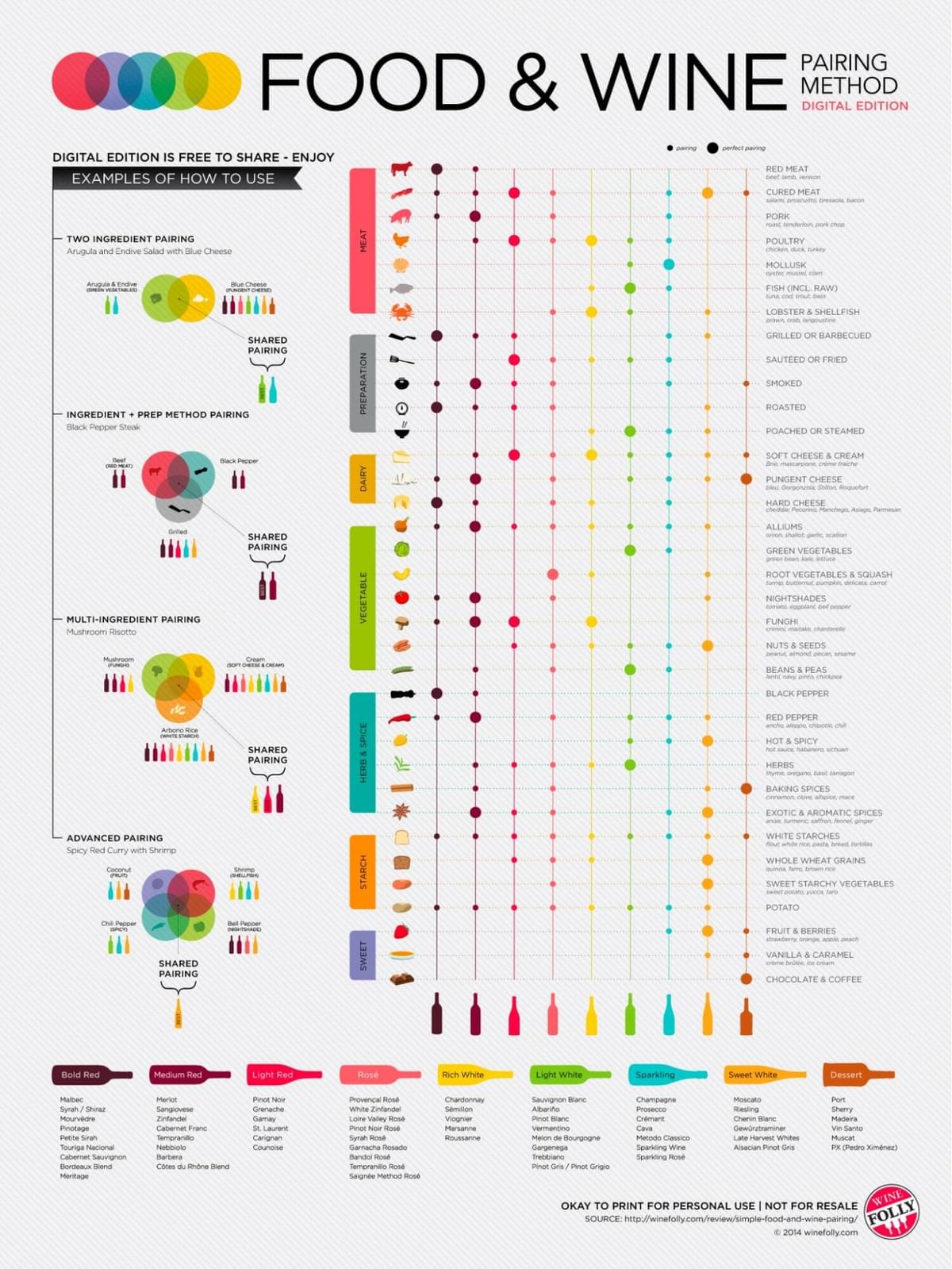SEO Best Practices Checklist 2024: Mastering the Art of Search Visibility

68% of online experiences begin with a search engine. This statistic hit home when I launched my first website and realized just how crucial SEO was. I spent countless hours trying to decipher the ever-changing algorithms and best practices. Now, I'm here to share what I've learned and help you navigate the complex world of SEO in 2024.
Also find the best SEO practices checklist here or make a copy the Google Sheet one here.
On-Page SEO Optimization: The Foundation of Search Success
On-page SEO remains a crucial aspect of search engine optimization in 2024. I've found that focusing on these essential elements can significantly improve search engine rankings and user experience. Let's dive into the nitty-gritty of content quality, title tags, meta descriptions, and URL structure to help you build a solid foundation for your SEO efforts.
Content Quality and Relevance: The Heart of SEO
High-quality, relevant content is more important than ever for SEO success. I've seen firsthand how search engines have gotten smarter at understanding user intent and delivering the most valuable results. To stay ahead, we need to focus on creating content that truly serves our audience's needs.
Content relevance is determined by semantic analysis algorithms. These sophisticated tools analyze the context and meaning of your content, not just individual keywords. It's no longer about stuffing your pages with target phrases; it's about creating comprehensive, valuable content that addresses user queries effectively.
User engagement metrics like dwell time and bounce rate have a significant influence on how search engines assess content quality. I've noticed that pages keeping visitors engaged for longer periods tend to perform better in search results. It's not just about getting people to click; it's about providing content that keeps them interested and coming back for more.
Natural language processing (NLP) helps search engines understand context and intent. This technology allows search engines to interpret the nuances of human language, making it crucial to write in a natural, conversational tone. I've found that content written for humans, not algorithms, tends to perform better in the long run.
Recent updates to Google's search algorithm have placed an even greater emphasis on content quality and relevance. "New ways of working and new user journeys for search visitors have come to the forefront" [Search Engine Journal]. This shift means we need to be more attuned to how users interact with our content and adapt our strategies accordingly.
Topical Authority: Becoming the Go-To Source
Developing comprehensive content clusters around your main topics is key to establishing topical authority in your niche. This approach involves creating in-depth, interconnected content that covers all aspects of a subject. I've seen significant improvements in search visibility when implementing this strategy.
For instance, on my fitness blog, I created a content cluster around "weight loss" with interconnected articles on nutrition, exercise routines, sleep habits, and mindset strategies. Each piece of content links to others within the cluster, reinforcing the site's authority on the topic. This approach not only improved my search rankings but also provided a more comprehensive resource for my readers.
E-A-T Signals: Building Trust with Search Engines and Users
Incorporating Expertise, Authoritativeness, and Trustworthiness (E-A-T) signals throughout your content is crucial to align with Google's quality guidelines. This means showcasing your credentials, citing reputable sources, and providing accurate, up-to-date information. I've found that E-A-T isn't just about impressing search engines – it's about building genuine trust with your audience.
Learn 7 tips to implement E-E-A-T in your YMYL content. These practical strategies have helped me significantly improve the perceived expertise and trustworthiness of my content, leading to better engagement and search performance.

Source: pagetraffic
Title Tags and Meta Descriptions: Your First Impression in Search Results
Optimizing title tags and meta descriptions is crucial for both search engines and users. These elements are often the first thing people see in search results, so they need to be compelling and informative. I've experimented with various approaches, and I'm excited to share some advanced techniques that have helped my titles and descriptions stand out.
Title tags should be under 60 characters to avoid truncation in SERPs. I've found that keeping titles concise yet descriptive is key to capturing attention and improving click-through rates. It's a balancing act between being informative and enticing.
Meta descriptions have a soft limit of 155-160 characters. While they don't directly impact rankings, well-crafted meta descriptions can significantly improve click-through rates. I treat them as mini-advertisements for my content, focusing on the value proposition and including a clear call-to-action.
Including target keywords in titles and descriptions can improve click-through rates. However, it's important to do this naturally. I've seen better results when I prioritize creating compelling, readable titles and descriptions over keyword stuffing.
Dynamic Title Tags: Adapting to User Intent
Implementing dynamic title tags that adapt based on user intent and search queries can significantly improve your click-through rates. This technique involves using variables in your title tags that change depending on the search term or user behavior. I was skeptical at first, but after implementing this on my site, I saw a noticeable increase in organic traffic.
Dynamic Title Tag Element | Example | Purpose |
|---|---|---|
Brand Name | {Brand} | Consistency across pages |
Primary Keyword | {Keyword} | Match search intent |
Secondary Keyword | {SecondaryKW} | Capture related searches |
Location | {City}, {State} | Local SEO optimization |
Current Year | {Year} | Freshness signal |
Meta Description A/B Testing: Refining Your Pitch
Continuously testing and refining meta descriptions can improve click-through rates from search results. I've tried different approaches – some focusing on benefits, others on features, and even posing questions. Using tools to track which versions perform best and iterating accordingly has been a game-changer for my search visibility.
One particularly effective strategy I've found is to create urgency in meta descriptions. For example, instead of a generic description for a blog post about SEO trends, I might use something like: "Discover the 5 SEO trends reshaping search in 2024. Don't fall behind – update your strategy now!" This approach has consistently outperformed more straightforward descriptions in my tests.

Source: splitsignal / semrush
URL Structure and Internal Linking: Guiding Users and Search Engines
Creating a logical site structure and optimizing internal links is crucial for improving crawlability and user navigation. A well-organized website makes it easier for both search engines and users to find and understand your content. I've learned some valuable lessons about URL structure and internal linking over the years, and I'm excited to share them with you.
Use descriptive, keyword-rich URLs for better understanding by search engines. I've found that URLs that clearly describe the content of the page not only help with SEO but also improve user experience. When users can understand what a page is about just by looking at the URL, they're more likely to click and engage with the content.
Implement a clear hierarchy in your URL structure (e.g., domain.com/category/subcategory/page-name). This approach helps both users and search engines understand the relationship between different pages on your site. It's been a game-changer for my site's organization and SEO performance.
Limit URL depth to improve crawlability and user experience. I've noticed that pages buried deep within a site structure tend to perform poorly in search results. Keeping your most important pages within a few clicks of the homepage can significantly improve their visibility and performance.
Semantic URLs: Making Sense of Your Links
Using descriptive, keyword-rich URLs that reflect your content's hierarchy and topic is essential for SEO. Semantic URLs help users and search engines understand what a page is about before they even click on it. I've made the mistake of using numbers or random strings in my URLs in the past, and I can tell you from experience – it's not worth it.
Instead of using a URL like "example.com/p=123", I now opt for something more descriptive like "example.com/seo-best-practices-2024". This immediately tells both users and search engines what the page is about. The impact on my click-through rates and overall SEO performance has been significant.
Technical SEO Optimization: Behind-the-Scenes Improvements
Technical SEO focuses on improving the website's backend structure and performance to enhance search engine crawling and indexing. While it might not be as visible as on-page elements, I've found that technical SEO can make or break your search engine performance. Let's dive into some key areas you need to focus on in 2024.
Source: are you the owner of this infographic? Get in touch to credit you properly!
Core Web Vitals: The Need for Speed (and Stability)
Optimizing your site's loading speed, interactivity, and visual stability to meet Google's Core Web Vitals standards is crucial in 2024. These metrics directly impact user experience and, consequently, your search rankings. I've spent countless hours tweaking and optimizing my sites to meet these standards, and I can tell you – it's worth the effort.
Core Web Vitals consist of three main metrics: LCP, FID, and CLS. Each of these metrics measures a different aspect of user experience, and together they provide a comprehensive picture of your site's performance. I've found that focusing on these metrics not only improves my search rankings but also leads to happier, more engaged users.
Google considers Core Web Vitals as ranking factors. This means that optimizing for these metrics isn't just about user experience – it's about staying competitive in search results. I've seen firsthand how improvements in Core Web Vitals can lead to better rankings and increased organic traffic.
Mobile performance is particularly important due to mobile-first indexing. With more users accessing the web on mobile devices, Google prioritizes the mobile version of your site for indexing and ranking. I've learned to always test and optimize for mobile first, then ensure desktop performance matches or exceeds it.
Google has recently updated its Core Web Vitals metrics, replacing First Input Delay (FID) with Interaction to Next Paint (INP). "INP tracks the time from when a user interacts with the page to when the visual response is observed" [Hootsuite]. This change emphasizes the importance of not just fast loading times, but also responsive interactions throughout the user's session on your site.
Largest Contentful Paint (LCP): First Impressions Matter
Improving the loading time of your main content enhances user experience and SEO performance. LCP measures how long it takes for the largest content element on your page to become visible. Aim for an LCP of 2.5 seconds or faster. This might involve optimizing images, leveraging browser caching, or using a content delivery network (CDN).
I've found that optimizing images often provides the biggest bang for your buck when it comes to improving LCP. Compressing images, using modern formats like WebP, and implementing lazy loading can dramatically reduce load times without sacrificing visual quality.

Source: are you the owner of this infographic? Get in touch to credit you properly!
First Input Delay (FID): Responsiveness is Key
Minimizing the time it takes for your site to respond to user interactions improves interactivity scores. FID measures the time from when a user first interacts with your page to when the browser can respond to that interaction. Keep your FID under 100 milliseconds by optimizing JavaScript execution and minimizing main thread work.
One effective strategy I've implemented is to defer non-critical JavaScript. By loading essential scripts first and deferring others until after the initial page load, I've significantly improved my FID scores. It's a balancing act between functionality and performance, but the results are worth it.
Cumulative Layout Shift (CLS): Stability Breeds Trust
Reducing unexpected layout shifts provides a stable visual experience for users. CLS measures how much your page's layout shifts during loading. Aim for a CLS score of 0.1 or less. This often involves setting size attributes for images and videos, and avoiding inserting content above existing content unless in response to user interaction.
I once had a frustrating issue with ads causing significant layout shifts on my site. By reserving space for ad units and ensuring all images had proper dimensions specified, I managed to reduce my CLS score dramatically. Not only did this improve my Core Web Vitals scores, but it also led to a noticeable decrease in bounce rates.
Core Web Vital | Good Score | Needs Improvement | Poor |
|---|---|---|---|
LCP | ≤ 2.5s | 2.5s - 4s | > 4s |
FID | ≤ 100ms | 100ms - 300ms | > 300ms |
CLS | ≤ 0.1 | 0.1 - 0.25 | > 0.25 |
Mobile-First Indexing: Prioritizing the Small Screen
Ensuring your website is fully optimized for mobile devices is crucial to align with Google's mobile-first indexing approach. With more than half of all web traffic coming from mobile devices, it's no longer optional to have a mobile-friendly site – it's essential. I learned this lesson the hard way when I first started in SEO, and I'm eager to share what I've learned about mobile optimization.
Google primarily uses the mobile version of content for indexing and ranking. This means that if your mobile site doesn't provide the same content and functionality as your desktop site, you could be missing out on valuable ranking opportunities. I've made it a habit to always design and develop for mobile first, then adapt for larger screens.
Responsive design is preferred over separate mobile sites. In my experience, maintaining a single responsive site is far more efficient than trying to keep separate mobile and desktop versions in sync. It's also better for SEO, as it ensures all your content is accessible and indexed regardless of the device used to access it.
Page speed on mobile devices is a critical ranking factor. Mobile users often have less patience for slow-loading sites, and Google takes this into account. I've found that optimizing images, minifying code, and leveraging browser caching can make a significant difference in mobile load times.
Responsive Design: One Site for All Devices
Implementing a responsive design that adapts seamlessly to various screen sizes and devices is the foundation of mobile optimization. This approach ensures that your content looks great and functions well whether it's viewed on a smartphone, tablet, or desktop computer. I've seen firsthand how a well-executed responsive design can boost both user engagement and search rankings.
Flexible layouts, images, and CSS media queries are the building blocks of truly responsive sites. I remember the days of pinching and zooming on mobile websites – it was a nightmare. Now, with responsive design, we can create fluid experiences that adapt to any screen size. It's not just about shrinking content; it's about reimagining how information is presented across devices.
Mobile Page Speed: Every Second Counts
Optimizing mobile page loading times through techniques like lazy loading and image compression is crucial for mobile SEO. Mobile users are often on slower connections, so every kilobyte counts. I've seen dramatic improvements in both user engagement and search rankings by focusing on mobile speed optimization.
Lazy loading for images and videos has been a game-changer for my sites. By only loading content as the user scrolls, initial page load times have decreased significantly. Coupled with proper image sizing and compression, this approach has helped me achieve impressive mobile speed scores.
For example, on my e-commerce site with high-resolution product images, implementing lazy loading resulted in a 40% decrease in initial page load times on mobile devices. This not only improved our search rankings but also led to a noticeable increase in mobile conversions.
Schema Markup and Structured Data: Speaking Search Engines' Language
Implementing structured data provides search engines with more context about your content and potentially enhances rich snippet opportunities. Schema markup helps search engines understand the content and context of your pages, which can lead to more informative search results and potentially higher click-through rates. I was initially skeptical about the impact of schema markup, but the results I've seen have made me a believer.
Schema.org is the most widely used vocabulary for structured data. It provides a standardized format that all major search engines understand. I've found that using Schema.org markup not only improves search visibility but also helps with voice search optimization – an increasingly important factor in SEO.
JSON-LD is the recommended format for implementing schema markup. It's cleaner and easier to implement than other formats like microdata. When I switched from microdata to JSON-LD, I noticed an immediate improvement in how quickly search engines picked up and displayed rich snippets for my content.
Rich results in SERPs can significantly increase visibility and click-through rates. I've seen firsthand how adding schema markup for things like product reviews, recipes, and events can make your search listings stand out. In one case, implementing review schema for a client's e-commerce site led to a 35% increase in organic click-through rates.
Dynamic Schema: Adapting to Content Changes
Using dynamic schema markup that adapts based on content changes and user interactions can give you an edge in search results. This advanced technique involves automatically generating and updating schema markup based on your content management system or user behavior. It ensures your structured data is always accurate and up-to-date, potentially leading to more relevant rich snippets in search results.
I recently implemented dynamic schema for a news website, allowing the markup to automatically update based on article content, author information, and user engagement metrics. The result was more frequent and accurate rich snippets in search results, leading to improved visibility and click-through rates for breaking news stories.

Source: are you the owner of this infographic? Get in touch to credit you properly!
Off-Page SEO Strategies: Building Your Online Reputation
Off-page SEO focuses on activities outside your website that can improve your search engine rankings and online presence. While you have less direct control over these factors, they can significantly impact your overall SEO performance. I've learned that a holistic approach to off-page SEO can yield impressive results.
Link Building and Digital PR: Earning Authority
Developing a strategic approach to earning high-quality backlinks and mentions from authoritative sources is crucial for off-page SEO. Backlinks remain one of the most important ranking factors, but the focus is increasingly on quality over quantity. I've seen sites with fewer, but higher-quality backlinks outperform those with a large number of low-quality links.
Backlinks from high-authority domains carry more weight. It's not just about getting any link; it's about getting links from respected, relevant sites in your industry. I once spent months building a relationship with a major industry publication, and the single backlink I earned from them had more impact than dozens of links from smaller sites.
Relevance of the linking domain is crucial for link value. A link from a site in your niche or a related field is generally more valuable than one from an unrelated site, even if the latter has higher overall authority. I've found that focusing on building relationships within my industry has led to more valuable, contextually relevant backlinks.
Anchor text diversity is important to avoid over-optimization penalties. In the past, I made the mistake of always using exact-match anchor text for backlinks. Now, I aim for a natural mix of branded, partial-match, and generic anchor texts. This approach not only helps avoid penalties but also looks more natural to both users and search engines.
Content-Driven Link Building: Creating Link-Worthy Assets
Creating linkable assets such as original research, infographics, or tools to naturally attract backlinks is a powerful strategy. The key is to produce content that provides unique value to your industry or niche. I've had great success with this approach, particularly when creating comprehensive industry reports that fill a gap in existing knowledge.
One of my most successful link-building campaigns involved creating an interactive tool that solved a common problem in my industry. Not only did it attract numerous high-quality backlinks, but it also positioned my site as an innovative resource in the field. The ongoing value of this asset has far exceeded my initial expectations.
Discover SaaS SEO secrets to create link-worthy content. This resource has been invaluable in helping me refine my approach to creating content that naturally attracts links in the competitive SaaS space.

Source: folly
Relationship-Based Outreach: Building Genuine Connections
Building genuine relationships with industry influencers and journalists to earn organic mentions and links is a long-term but effective strategy. This approach involves networking, engaging in industry discussions, and providing value to others in your field. Over time, these relationships can lead to natural link opportunities and mentions that carry significant weight with search engines.
I've found that attending industry conferences and actively participating in online communities can be incredibly valuable for building these relationships. It's not about immediate link gains; it's about becoming a recognized and respected voice in your field. The links and mentions that come from these genuine connections tend to be some of the most valuable and long-lasting.
Social Signals and Brand Mentions: The Indirect Impact
While not direct ranking factors, social signals and brand mentions can indirectly influence SEO performance. They contribute to your overall online presence and can drive traffic, engagement, and potential link opportunities. I've seen how a strong social media presence can amplify the reach of your content and lead to valuable backlink opportunities.
Social shares can increase visibility and drive referral traffic. While they may not directly impact rankings, the increased exposure can lead to more natural backlinks and improved brand recognition. I've had content go viral on social media, resulting in a surge of traffic and subsequent links from bloggers and journalists who discovered it through social channels.
Brand mentions, even without links, can contribute to brand authority. Google's ability to understand brand mentions and their context has improved significantly. I've noticed that consistent, positive brand mentions across the web seem to correlate with improved search visibility, even in the absence of direct links.
Social profiles often rank for brand-related searches. Optimizing your social media profiles and keeping them active can help dominate the first page of search results for your brand name. This can be particularly valuable for reputation management and controlling the narrative around your brand.
Social Media Engagement: Beyond Just Posting
Developing a strong social media presence to increase brand visibility and drive traffic to your website is crucial in 2024. This involves more than just posting regularly – it's about creating engaging content that resonates with your audience, participating in conversations, and building a community around your brand. While social media activity doesn't directly impact rankings, it can lead to increased brand awareness and potential backlink opportunities.
I've found that hosting live Q&A sessions on platforms like Twitter or Instagram can be incredibly effective for building engagement and authority. These sessions not only provide value to your audience but also often result in content that can be repurposed for your website, potentially attracting backlinks from those who found the information useful.
Unlinked Brand Mentions: Turning Mentions into Links
Monitoring and capitalizing on unlinked brand mentions by reaching out to convert them into valuable backlinks is an often-overlooked strategy. Tools like Google Alerts or more advanced brand monitoring software can help you track mentions of your brand across the web. When you find a mention that doesn't include a link, reach out to the author or website owner and politely request that they add a link to your site.
I once discovered a major industry blog had mentioned my company in an article without linking to us. A friendly email to the author not only resulted in them adding the link but also opened up a dialogue that led to future collaboration opportunities. It's a reminder that sometimes, all you need to do is ask.
This video provides valuable insights on how to effectively turn unlinked mentions into backlinks, complementing the content above.
Video Source: YouTube
Keyword Research and Content Strategy: The Blueprint for SEO Success
A robust keyword research process and content strategy are foundational to SEO success in 2024. With search engines becoming increasingly sophisticated in understanding user intent, your approach to keywords and content needs to evolve. I've had to completely rethink my keyword strategy in recent years, moving away from a focus on individual keywords to a more holistic, topic-based approach.
AI-Assisted Keyword Research: Harnessing Machine Learning
Leveraging AI tools to uncover valuable keyword opportunities and content gaps in your niche can give you a significant advantage. These tools can analyze vast amounts of data to identify trends, predict search behavior, and suggest keywords you might have overlooked. I was initially skeptical of AI-powered tools, but they've become an indispensable part of my SEO toolkit. From AI PPT Generators to AI video generation.
AI algorithms can analyze search patterns and user behavior in ways that would be impossible for a human. I've used these tools to identify seasonal trends and emerging topics in my niche before they become mainstream. This has allowed me to create content ahead of the curve, establishing authority on topics before they become highly competitive.
Machine learning models can predict keyword trends and seasonality with impressive accuracy. By analyzing historical data and current trends, these models can forecast which keywords are likely to gain popularity in the coming months. I've used these predictions to inform my content calendar, ensuring I'm creating relevant content at the right time.
Natural language processing helps understand search intent behind keywords. This technology has been a game-changer in my keyword research process. Instead of focusing solely on search volume, I now prioritize keywords based on the user intent they represent. This has led to creating content that more closely aligns with what users are actually looking for.
Intent-Based Keyword Clustering: Aligning with User Needs
Grouping keywords based on user intent to create more targeted and effective content is a powerful strategy. AI tools can help you identify patterns in search behavior and group keywords that serve similar user intents. This allows you to create content that directly addresses what users are looking for, potentially improving your rankings for multiple related keywords.
I recently used this approach for a client in the health and wellness space. By clustering keywords around different stages of the fitness journey – from beginners looking for basic workout plans to advanced athletes seeking nutrition advice – we were able to create a content strategy that comprehensively covered the topic while targeting specific user intents at each stage.

Source: semrush.com
Predictive Keyword Trends: Staying Ahead of the Curve
Using AI-powered tools to predict emerging keyword trends and stay ahead of the competition can give you a first-mover advantage. These tools analyze historical data and current trends to forecast which keywords are likely to gain popularity in the near future. By creating content around these predicted trends, you can potentially rank well for keywords before they become highly competitive.
I've had success using this approach in the tech industry, where trends can emerge and evolve rapidly. By identifying and creating content around emerging technologies before they hit the mainstream, I've been able to establish authority and capture significant search traffic as interest in these topics grows.
Content Gap Analysis: Finding Your Niche
Identifying content opportunities by analyzing gaps in your current content strategy and competitor coverage is crucial for standing out in crowded markets. This process involves a thorough examination of your existing content, your competitors' content, and the needs of your target audience. I've found that regular content gap analysis is essential for maintaining a competitive edge in SEO.
Content gap analysis helps identify untapped opportunities in your niche. By systematically comparing your content coverage to that of your competitors and the overall demand in your industry, you can uncover topics and angles that haven't been fully explored. I've often found that these gaps represent significant opportunities for creating unique, valuable content that can attract both users and search engines.
Competitor analysis reveals topics and keywords you may be missing. While it's important not to simply copy your competitors, understanding what they're covering (and what they're not) can inform your content strategy. I regularly review the content of top-ranking sites in my niche, looking for areas where I can provide more depth, a different perspective, or fill in missing information.
User intent mapping ensures your content aligns with audience needs. By analyzing search queries and user behavior, you can create content that directly addresses the questions and problems your audience is trying to solve. I've found that content created with a clear understanding of user intent tends to perform better in search results and generates more engagement.
Competitor Content Benchmarking: Learning from the Best
Analyzing top-performing content from competitors to inform your own content strategy can provide valuable insights. Look at the topics they cover, the formats they use, and how their audience engages with their content. This doesn't mean copying their approach, but rather understanding what resonates in your industry and finding ways to elevate it. I once discovered a competitor's in-depth guide that was performing exceptionally well. Instead of replicating it, I created a complementary piece that addressed unanswered questions and provided a unique angle. This approach not only filled a content gap but also positioned my site as a valuable resource alongside the existing content.
User-Generated Content Opportunities: Leveraging Your Community
Tapping into user-generated content can boost engagement and SEO performance. This might involve showcasing customer reviews, hosting Q&A sessions, or creating a community forum. User-generated content not only provides fresh, relevant material for your site but also signals to search engines that your site is active and valuable to users.
I've had great success with a "customer stories" section on my site, where users share their experiences and insights. This not only provides social proof but also creates a steady stream of unique, keyword-rich content that search engines love. Plus, it gives our customers a sense of ownership and involvement, strengthening their connection to our brand.
Key Takeaways: Your SEO Checklist for 2024
As we wrap up this deep dive into SEO best practices for 2024, let's recap the crucial points to focus on. Remember, SEO is an ever-evolving field, and what works today might need adjustment tomorrow. Stay curious, be willing to experiment, and always put your users first.
- Create content that establishes topical authority and incorporates E-A-T signals. It's about depth and expertise, not just keywords.
- Experiment with dynamic elements in your title tags and meta descriptions. A/B testing can reveal surprising insights about what attracts clicks.
- Craft a logical site structure with semantic URLs. Think of your site as a well-organized library, easy for both users and search engines to navigate.
- Obsess over Core Web Vitals. Every millisecond counts in user experience and, consequently, in search rankings.
- Embrace mobile-first design. If it doesn't work well on a smartphone, it's not ready for prime time.
- Get creative with schema markup. Dynamic schema can give you an edge in rich snippets and featured results.
- Build relationships, not just links. Quality connections in your industry can lead to natural, valuable backlinks.
- Harness social media as a discovery tool. While not a direct ranking factor, it can amplify your content's reach and attract links.
- Leverage AI for smarter keyword research. Machine learning can uncover trends and opportunities you might otherwise miss.
- Regularly audit your content strategy. Fill gaps, update outdated information, and always look for ways to add unique value.
Implementing these strategies isn't a one-time task; it's an ongoing process of refinement and adaptation. The SEO landscape will continue to evolve, but by focusing on providing genuine value to your users and staying attuned to search engine developments, you'll be well-positioned for success in 2024 and beyond.
Remember, the most effective SEO strategy is one that aligns with your specific goals, audience, and resources. Don't be afraid to experiment and find what works best for your unique situation. The journey of SEO is as much about learning and adapting as it is about implementing best practices.
As you embark on your SEO journey for 2024, keep in mind that patience and persistence are key. SEO results rarely happen overnight, but with consistent effort and a willingness to learn, you can achieve remarkable improvements in your search visibility and organic traffic.
Here's to your SEO success in 2024 and beyond!
On-Page SEO Optimization
On-Page SEO Optimization: The Foundation
- Optimize Title Tags
- Write Compelling Meta Descriptions
- Create SEO-Friendly URLs
- Implement Internal Linking Structure
Content Quality and Relevance: The Heart of SEO
- Write High-Quality, Relevant Content
- Utilize Semantic Keywords
- Engage Users with Great Content
Topical Authority: Becoming a Trusted Source
E-A-T Signals: Building Trust
- Showcase Expertise and Authority
- Cite Reputable Sources
Technical SEO Optimization: Behind-the-Scenes Enhancements
- Improve Core Web Vitals (LCP, FID, CLS)
- Optimize for Mobile-First Indexing
- Implement Schema Markup and Structured Data
Off-Page SEO Strategies: Expanding Your Reach
- Develop a Link-Building Strategy
- Diversify Anchor Text for Backlinks
- Monitor and Capture Brand Mentions
- Leverage Social Signals for SEO
Content Strategy: Keyword Research and Optimization
- Conduct Intent-Based Keyword Research
- Monitor Emerging Keyword Trends
- Fill Content Gaps by Competitor Analysis
Ongoing SEO Strategy
- Continuously A/B Test Meta Descriptions and Titles
- Regularly Audit and Update Your Content




